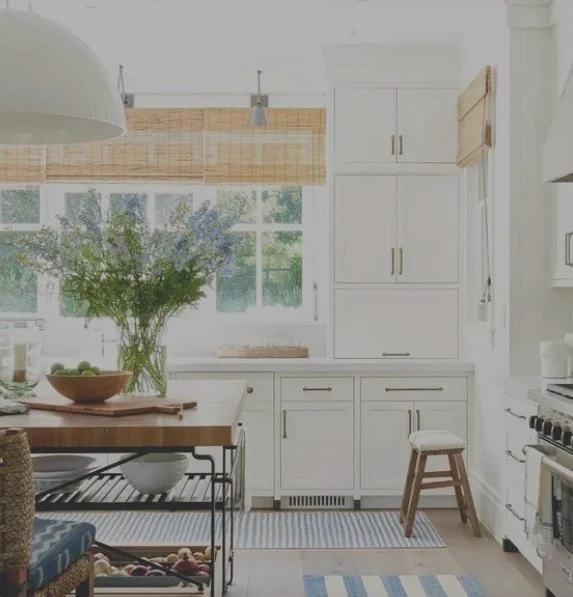More Thoughts On Home
Developing A Timeless Style
- image of kitchen by Mark D. Sikes
There is a lot of debate surrounding trends and style, and a lot of different ways to define those words. A trend particularly in the fashion and design world, usually starts with an influential pocket of culture - maybe someone influential or a group of people do or wear something that catches on and through a process that social scientists still consider somewhat mysterious, it spreads and makes its way down to be manufactured and reproduced on a wide scale. Before you know it, everyone is wearing Hush Puppies, and look alike Hush Puppies are being sold at Wal-Mart and Target and basically everywhere. (This is a reference to a story Malcolm Gladwell tells in his book “The Tipping Point” about the resurgence of Hush Puppies in the 90’s”) I mean, really, who decided fanny packs were a good idea again? And why is everyone suddenly into mid century furniture and raw wood? I’m old enough to remember when low rise jeans created some extremely precarious situations for me, and a few weeks ago I bought a pair of jeans that were what they call “ribcage” rise. Things change.
Trends can’t always be traced back to a single person, but there is always the element of influence present. Influence isn’t inherently good or bad, but it’s something to be aware of, and it’s something that we should be aware of within the context of decorating our homes. Because furniture tends to be a little more of an investment than a pair of jeans, I think it’s important to develop an eye for a timeless, classic aesthetic. This doesn’t mean that your style has to fall into one particular period or has to be traditional, but it does mean when you make investments in furniture and art for your home you are buying pieces that are well constructed and classic. They are what I like to call the strong silent type. They don’t have to make a big statement, they just do their job in the room. There is a place in some contexts for trendy items, but mostly these will be in the form of accessories and not investment furniture or hard surfaces.
When it comes to the hard surfaces of your home (floors, countertops, etc.) and furniture select the most classic and quality that you can afford. It might seem boring, but as I mentioned above you can add interest in the things that are easy to change accessories, fabric, etc. You might be wondering what this means practically. How do you determine what you like? Where do you start? And what actually makes something timeless?
If you can afford it, get help. An interior designer can act as a guide and will help you determine common threads in your taste. I tell people to make a board on Pinterest of all their favorite interior images and find the common themes. If they are unsure about what they like this will usually provide some clarity and insight.
A designer should direct you towards what you like and not what’s necessarily on trend. If you are drawn to deep earthy tones, but the trend is white walls and gray accents, they can help you make your look current. Color is color. Some are more out and some are more in at different times, but ultimately it just depends on the context it’s used in.
When we use the word timeless we are looking for an element of quality and artistry. Think Rome. Ok, I’m kidding, but not really. Items that should inherently have a bespoke, artistic quality lose that when you start to mass manufacture them to create availability. You ultimately end up with a product that will look good for a little while, but will not stand the test of time and unfortunately, like Macaulay Culkin, will not age well.
If you are thinking about updating your home this year and haven’t taken the time to really discover what you like. Start with collecting images and finding the themes. It’s really a fun exercise. If you can’t afford to hire help, there are so many good resources online and lots of access to design information. The good thing about the age that we live in is there are lots of ways to source good, quality pieces without paying a lot. If you are just starting out and on a really tight budget, Facebook marketplace is a great place to scour when looking for inexpensive quality, as well as antique and second hand stores. A good question to ask yourself before you make a bigger purchase is, “Do I see myself still loving this in 10 years?”
Creating a collected and layered home takes time, but remember, Rome wasn’t built in a day.:)
Amy


